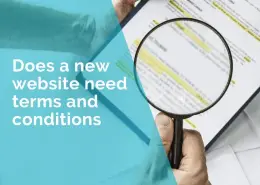Be Different to Your Competitors: Express Empathy in Content Marketing
Whether B2-B or B2C segments, customers prefer to deal with people they trust. It proves that no one wants to give their money to a stranger. Therefore, the main task of any brand is to establish contact with the target audience. Then, companies start wondering what to do, how to address the client, and what content to suggest to people.
Empathy stands out from all the workable marketing research and analytics tools. The winner comes from the best one who understands the needs and intentions of the clients. Below, we will think of what it is for a company to be empathic and the 7 ways to achieve that. Keep reading to know more!
Empathy in Content Marketing:
While selling products and services, brands are still focused on revenue. But the way users move through the sales funnel matters. So tailor your content marketing, redefine the customer journey, and educate your employees about the benefits of empathy.
Empathy in marketing is seeing the world from the user’s point of view. This approach puts the customer at the center of the marketing strategy. It results in sincerity as long as no close relationships (as the brand would like to get) are possible without it.
Statista conducted the research where, in total, three-quarters of respondents stated that toxicity and misinformation on social media had decreased their empathy levels. Thus, blog, SMM, or UI/UX content creates a convenient and unforgettable customer journey. For example, you can use additional apps, like WordPress plugin to customize bookings. There you can talk to hearts, educate, and entertain. Yet, emotions rule the clients’ actions and make their purchases.
#1 Focus on Your Customers
Empathy is a physiological feature of our brain; it is based on the activity of mirror neurons (responsible for imitative behavior, they “decode” for us the feelings and emotions of another person by his facial expressions and gestures). Empathy makes us understand another person’s feelings and leads to a decision we would make in his place. Thus, prioritize your customers and talk about them more than yourself.
Similar experiences will help to understand others. Feeling the pain of the client, knowing his needs and principles of decision-making, you can offer him what he wants in the depths of his soul. It creates a new customer experience and the motivation to choose your company again and again.
Companies that calibrate their actions from the perspective of the customer increase the happiness of existing customers and more easily attract new audiences.
#2 Be Inclusive and Promote Diversity
Your content must be valuable to customers. Most often, you will need to use educational content. Conduct an audit of existing content to find relevant materials for your audience. You can update old content that can evoke emotions in customers.
One more thing, it seems for a business that it already knows everything about customers. Indeed, we have statistics, reports, and a mystery shopper – and that’s enough for us.
Usually, business focuses on past performance and makes decisions based on trends and statistics. So look for updates on your information, ask, and interact with potential clients and different audiences.
Personas
A marketing persona is a fictional character who represents and communicates the attributes of a particular target market segment. This collective image of the ideal buyer is created based on qualitative and quantitative information.
Work with different imaginary representatives from your potential audiences. What are their needs, values, routines, and hobbies, and how do they find your services?
If the portrait of your target audience is like a man between 18 and 25, lives in a million-plus city, likes watching 90s TV shows, and is passionate about cars, tailor your proposal to this particular person.
First, you should write down all the possible profiles of your clients. Then, you can share the information with brand managers, copywriters, and designers to follow the guidelines and create convincing posts. Ask Best Writers Online specialists to give you the best samples for your websites and social media.
#3 Provide Real Value to Every Customer
Work with the fulfilled personas and train your employees to deal with them. Some actions may be intuitive, such as being friendly and enthusiastic; however, some corporate style tricks and tone of voice are general among the company. Please provide them with the scripts and guidelines.
Remind employees to think, “What exactly does a person need right now?” On some occasions, they no longer need scripts. Instead, encourage a quick response to customer needs. Internal empathy — understanding that an employee shares the pain of a client — allows the company to quickly respond to feedback from the front office, quickly change processes in the company and make them as convenient as possible for employees and customers. In some top UI/UX companies, customer happiness managers appear, whose task is to make customers feel good.
It may be your practice for employees to write every evening about problems customers have experienced during the day. Then sent to the central office, and at the end of two weeks, field employees receive a report on the changes in work adopted based on their feedback. Workers from writing services can do the report based on the research or they can do the custom writing review. By implementing the obtained information in your life, you will create trust between employees and the company. You can add the obtained cases to your blog and create texts for clients.
Look at the behavioral patterns of people. For example, note when a client comes, what he orders, how much time he spends in the coffee shop, goes he is happy. Based on the observations, complete the customer journey map (CJM). Check comments and make poles.
#4 Work with Customers’ Pain Points
Put yourself in the shoes of your audience to feel their needs. Look at their intentions when they come to you. After all, the realities faced by customers have influenced their thinking, desires, conditions, and problems. Give them the idea that can make their life better.
For example, Dove created a supportive environment on Instagram for their fans. It promotes infinite self-love to women and inspires them. In response, women adore the brand.
The Key to Success: Dove regularly reminds its audience of the importance of loving yourself and others. Through this, the brand builds strong relationships with customers and raises the self-esteem of women around the world.
#5 Share Customer and Employee Stories
You do not always need to question top managers and owners to find a great experience. Your employees are the source of endless and exciting stories. Thinking about content marketing and specific topics to write about, it is a huge plus to share stories from people who deal with you and cope with you. Showing how they overcome troubles, solve issues, and reach heights makes them closer to them and your brand.
A client wants to build relationships with your company and know it better. Employees, chat managers, consultants, and support teams know it the best. So ask Writing Judge to write posts about their job and cases, and hire professional specialists for writing services to interview your workers.
#6 Personalize the Content
Personalization uses user data to its advantage. It shows how the offer, product, and other content is given to your visitors based on their previous purchases, demographics, or personal data. A fine example is the first name usage and history of purchases in the e-mail newsletter. There are several ways to personalize content; some are more obvious than others. The right technologies and the pattern data collected and analyzed are the keys to better and more relevant personalization. Here are some examples of how great personalized marketing can be.
Weather-sensitive personalization on the website
These announcements at Very are based on what the weather is like right now. You can show products based on a person’s previous purchases but make selections to suit the weather. If it’s hot, offer them something light/refreshing (depending on the product). Everything is straightforward and human.
Netflix recommendations
Netflix is known for its data-driven approach to creating watchlists. They know precisely when you press play or pause, when you add a movie to Watch Later, or when you only watch half of a movie. Their algorithms are constantly improving and developing to provide the most pleasant consumer experience (CX).
#7 Ask for Feedback and Take Action
When it comes to customer pain points regarding your brand, this is where you have to dig deeper. First, analyze your traffic and conversions weekly, and note what affects their growth and decline. It is a great way to discover what aspects of your brand attract customers. Next, keep an eye on the conversations around your brand to understand the audience’s mood.
Interactivity in marketing is a great way to build empathy. But don’t jump into every conversation, even if you want to be defensive. If customers are dissatisfied with your brand, you should find out why it is and how you can fix it. Finally, of course, nothing beats direct communication with your customers. Schedule a live broadcast or start a poll by asking your audience questions.
Nobody wants their customers to get lost in moving up the funnel. Create detailed instructions that answer essential questions, such as registering on your site or placing an order. Keep them simple and visual. Think of sharing screenshots, video instructions, step by step guides.
To sum up, empathy is essential everywhere you go. When you possess a business, there are different levels where you can express it. Focus on your client’s needs, talk to potential target audiences, bring them knowledge, reveal the secrets of your employers’ job, and share helpful content with people. It will result in an increased number of clients and revenue, but the essential empathy will make you the dream boss and a better person.
***
by Frank Hamilton














